A growing number of countries are confronted by the challenge of demographic change and ageing populations. These changes are most advanced in East Asia in Japan, Republic of Korea, China and Taiwan, so that the opportunities exist for other countries to learn from these experiences and responses.
Moreover, the demographic revolution is occurring at a time when revolutionary changes in digital technologies associated with artificial intelligence, robotics, and biotechnologies are starting to impact on society so that governments are facing the perplexing question of what kind of society will emerge: machine dominated or humanistic?
These revolutionary changes give a new significance to learning in later life, and pose the question for governments whether the changes should serve as a catalyst for policies for good active ageing for all in the framework of revitalising learning throughout the life-course in building a sustainable society. In this context, PASCAL and PIMA have collaborated in establishing a special interest group to address this question.
This report of the SIG adopts a societal life-course approach with learning and community relationships at the core of this report. We bring historical perspectives to the report and show how these relationships have progressed through several stages of development marked by the roles of community learning centres and later in the 20th century by the emergence of learning cities and neighbourhoods where these relationships are fostered at a city level, often then cascading down to districts and local neighbourhoods. There are signs that learning cities may be progressing to a further stage of development, and possibly community learning centres as well.
In exploring a conceptual and policy framework for learning in later life, we have gone back to the idea of active ageing developed by the World Health Organisation (WHO) in 2002 with pillars of participation, health, and security supporting this concept. In connecting learning and community in the context we discuss in this report, we have recognised the need for an ethical and moral framework that supports learning in later life while also contributing to good sustainable communities that build local and global consciousness and citizenship.
For this reason we have added inclusion, citizenship, happiness, and employability as further pillars relevant to both individual and community objectives.
In Part II of the report we give a number of cameo examples of good practice in the three thrusts we explore. These are community learning centres with Volkshochschulen in Germany, Kominkan in Japan, Senior Active Learning Centres in Taiwan and Neighbourhood Houses in Australia; dedicated institutions for seniors with the University of the Third Age in Singapore; and learning cities with examples from Suwon (Republic of Korea) Korea and Beijing (China). We also give examples from the UK and New Zealand as countries, like Singapore, that depend on civil society initiatives such as the U3A rather than government leadership.
The important societal role of networks of community learning centres in adapting to changing conditions is summed up in the paper on Kominkan in Japan where these institutions contribute to the stability of Japanese society in a time of dramatic change and which have become “the basis of a decentralized revitalization of Japanese society”. Japan’s efforts in progressing to Society 5.0 are underpinned by the important role of the Kominkan.
In Part III we return to the context discussed in the report with ageing populations and the looming challenge of the fourth industrial revolution, and provide some examples of ways of moving forward in response to these challenges. Life-course questions are addressed in the proposal for a fourfold category of stages in the adult life-course (18-25, 26-50, 51-75, 76+) which had been proposed in the Schuller and Watson report of the UK Inquiry into Lifelong Leaning. The importance of integrating contributions from a range of stakeholders is a central theme with heritage learning and the role of cultural institutions given as an example of ways in which learning in later life can be enriched and deepened.
While much of the report explores learning and community relationships through several stages of development, the learning and health nexus has assumed particular importance following the 2015 WHO World Report on Ageing and Health which, like this SIG, also adopted a societal life-course approach with ageing viewed as “a rich new opportunity for both individuals and society”. As public health systems orientate to this societal approach, opportunities will arise for collaboration in empowering people to control their own lives, supported by communities, in adapting to changing conditions in the life-course.
Various interests identified by the WHO report are ones we share. These include the role of identity, relationships, bringing meaning and purpose to lives in the senior years, and happiness. There is much potential for collaboration in addressing such questions, such as collaboration between learning cities and healthy cities as has happened in Cork under its EcCoWell initiative with joint discussion of subjects such as mental health.
We give examples in Part III of progress in connecting learning, health, and community development such as the Cork EcCoWell initiative and the work of the Glasgow Centre for Sustainable, Healthy, Learning Cities and Neighbourhoods which has significant research funding to support collaborative research and capacity strengthening in the global south.
Overall, we have recognised the triple helix of learning, health, and community relationships as a priority in action towards good active ageing for all in a sustainable society.
The progression of learning and community relationships through several institutional stages has gone along with a broadening from local to global perspectives. As the UNESCO Cork Call to Action for Learning Cities reminds us, both are needed. While much has been achieved with the wave of 200 learning cities since 2015 joining the UNESCO GNLC (Global Network of Learning Cities), the situation around the world remains patchy with adult learning not seen as a priority in too many countries. The UK paper repeats the views of many in a call for “despair or hope”?
So will the challenge of ageing populations and the looming fourth industrial revolution serve as a catalyst for a general revitalisation of learning and community building in later life, as a step towards the universal learning society envisioned by the UNESCO Faure commission in 1972? The examples, and above all the progression of ideas, given in this report auger well for a further period of creative problem solving.
The full report is featured below...
jordan release date | Nike Off-White
Discussion topics:
- Log in to post comments




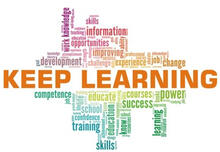

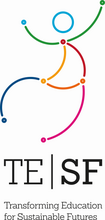

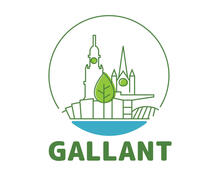
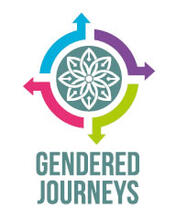
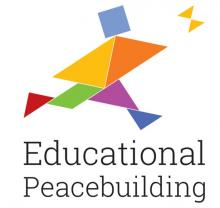


Latest Comments